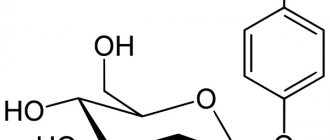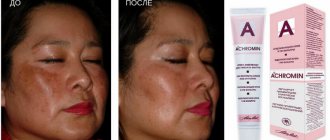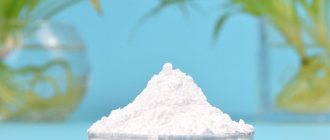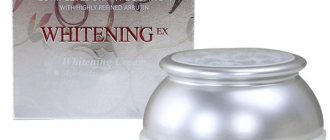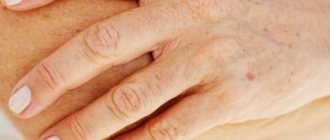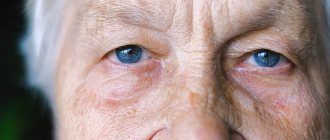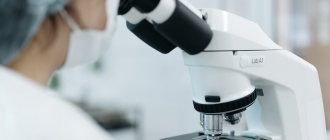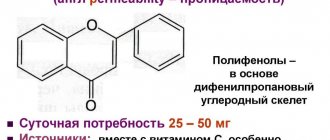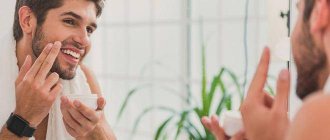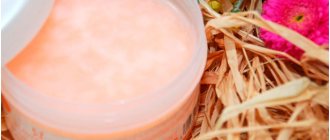Chemical compound
Hydroquinone
| Names | |
| Preferred IUPAC name Benzene-1,4-diol [1] | |
| Other names Hydroquinone [1] Idroquinone Quinol 1,4-Dihydroxybenzene 1,4-Hydroxybenzene | |
| Identifiers | |
| Number of CAS |
|
| 3D model (JSmol) |
|
| Link to Beilstein | 605970 |
| CHEBY |
|
| CHAMBL |
|
| ChemSpider |
|
| ECHA InfoCard | 100.004.199 |
| EU number |
|
| Link to Gmelin | 2742 |
| KEGG |
|
| PubChem C.I.D. |
|
| RTECS number |
|
| UNII |
|
| UN number | 3077, 2662 |
| CompTox Dashboard (EPA) |
|
InCHI
| |
Smiles
| |
| Characteristics | |
| Chemical formula | C 6 H 6 O 2 |
| Molar mass | 110.112 g mol -1 |
| Appearance | white solid |
| Density | 1.3 g cm -3 , solid |
| Melting temperature | 172 °C (342 °F, 445 K) |
| Boiling point | 287 °C (549 °F, 560 K) |
| Solubility in water | 5.9 g/100 ml (15°C) |
| Gas pressure | 10 −5 mm Hg. Art. (20°C) [2] |
| Acidity ( pKa ) | 9,9 [3] |
| Magnetic susceptibility (χ) | −64.63 × 10 −6 cm 3 / mol |
| Structure | |
| Dipole moment | 1.4 ± 0.1 D [4] |
| Pharmacology | |
| ATC code | D11AX11 (WHO) |
| Dangers | |
| EU classification (DSD) (obsolete) | Harmful ( Xn ) Carc. Cat. 3 Muta. Cat. 3 Dangerous for the environment ( N ) |
| R-phrases (obsolete) | R22 R40 R41 R43 R50 R68 |
| S-phrases (obsolete) | (S2) S26 S36 / 37/39 S61 |
| NFPA 704 (fire diamond) | [6] 1 2 |
| Flash point | 165 °C (329 °F, 438 K) |
| Lethal dose or concentration (LD, LC): | |
| LD 50 (average dose) | 490 mg/kg (mammal, oral) 245 mg/kg (mouse, oral) 200 mg/kg (rabbit, oral) 320 mg/kg (rat, oral) 550 mg/kg (guinea pig, oral) 200 mg/kg (dog, orally) 70 mg/kg (cat, orally) [5] |
| NIOSH (US Health Exposure Limits): | |
| PEL (Permissible) | TWA 2 mg/m3 [2] |
| REL (recommended) | C 2 mg/m3 [15 minutes] [2] |
| IDLH (Imminent Hazard) | 50 mg/m3 [2] |
| Related compounds | |
| Related benzenediols | Pyrocatechol Resorcinol |
| Related compounds | 1,4-benzoquinone |
| Unless otherwise stated, data is for materials in their standard state (at 25 °C [77 °F], 100 kPa). | |
| Y check (what is ?)YN | |
| Links to infoboxes | |
Hydroquinone
, also known as
benzene-1,4-diol
or
quinol
, is an aromatic organic compound that is a type of phenol, a derivative of benzene, having the chemical formula C6H4(OH)2. It has two hydroxyl groups linked to the benzene ring in the para position. It is a white granular solid. Substituted derivatives of this parent compound are also called hydroquinones. The name "hydroquinone" was coined by Friedrich Wöhler in 1843.[7]
Production[edit]
Hydroquinone is produced industrially in two main ways. [8]
- The most widely used route is similar to the cumene process in the reaction mechanism and involves the dialkylation of benzene with propylene to produce 1,4-diisopropylbenzene. This compound reacts with air to form a bis(hydroperoxide), which is structurally similar to cumene hydroperoxide and rearranges in acid to form acetone and hydroquinone. [9]
- The second route involves hydroxylation from phenol in the presence of a catalyst. The conversion uses hydrogen peroxide and gives a mixture of hydroquinone and catechol (benzene-1,2-diol):
C 6 H 5 OH + H 2 O 2 → C 6 H 4 (OH) 2 + H 2 O
Other, less common methods include:
- A potentially significant synthesis of hydroquinone from acetylene and iron pentacarbonyl has been proposed [10][11][12][13][14][15] Iron pentacarbonyl serves as a catalyst, rather than a reactant, in the presence of free carbon monoxide. Rhodium or ruthenium can replace iron as a catalyst with favorable chemical yields, but are not usually used due to the cost of removing them from the reaction mixture. [10]
- Hydroquinone and its derivatives can also be obtained by oxidation of various phenols. Examples include Elbs persulfate oxidation and Dakin oxidation:
- Hydroquinone was first prepared in 1820 by the French chemists Pelletier and Caventou through dry distillation from quinic acid. [16]
Physical properties
White or colorless prismatic crystals, sweetish in taste. It has modifications that differ in physical properties: the stable α-modification has a melting point of 173.8–174.8 °C and a density of 1.36 g/cm2, the unstable γ-modification has a melting point of 169 °C and a density of 1.325 g/cm2. It has a molar mass of 110.11 g/mol, a boiling point of 286.5 °C, and a flash point of 165 °C. Sublimes at 163.5 °C (10 mmHg).
Soluble in water (5.26 g/100 ml at 5 °C, 21.21 g/100 ml at 50 °C, 56.25 g/100 ml at 70 °C), alcohol (127.27 g/100 g ), acetone (77.94 g/100 g). Forms clathrates. In particular, the clathrate with methanol has the formula 3C6H6O2·CH3OH.
The reagent may contain impurities that appear as an insoluble black powder. The amount of impurities increases with long-term or improper storage, and if there is a large amount of them, the reagent becomes unsuitable for use.
Reactions[edit]
The reactivity of the hydroxyl groups of hydroquinone resembles that of other phenols, being slightly acidic. The resulting conjugate base is easily subjected to O-
alkylation to form mono- and diesters.
Likewise, hydroquinone is very sensitive to ring substitution in Friedel-Crafts reactions such as alkylation. This reaction is used as a route to popular antioxidants such as 2- tert-
butyl-4-methoxyphenol (BHA). The useful dye quinisarin is prepared by diacylation of hydroquinone with phthalic anhydride. [8]
Redox [edit]
Hydroquinone is oxidized under mild conditions to form benzoquinone. This process can be reversed. Some natural hydroquinone derivatives exhibit this kind of reactivity, one example being coenzyme Q. Industrially, this reaction is used both with hydroquinone itself and with its derivatives, where one OH is replaced by an amine.
When colorless hydroquinone and benzoquinone, a bright yellow solid, crystallize together in a 1:1 ratio, a dark green crystalline charge transfer complex (melting point 171 °C) called quinhydrone (C6H6O2 C6H) is formed 4). O 2 ) is formed. This complex dissolves in hot water, where the two molecules dissociate in solution. [17]
Amination[edit]
An important reaction is the conversion of hydroquinone to mono- and diamine derivatives. Methylaminophenol, used in photography, is produced as follows: [8]
C 6 H 4 (OH) 2 + CH 3 NH 2 → HOC 6 H 4 NHCH 3 + H 2 O
Likewise, diamines used in the rubber industry as anti-ozone agents are similarly prepared from aniline:
C 6 H 4 (OH) 2 + 2 C 6 H 5 NH 2 → C 6 H 4 (N (H) C 6 H 5 ) 2 + 2 H 2 O
Content
- 1. History
- 2 Physical properties
- 3 Chemical properties 3.1 Analytical determination
- 3.2 Photographic development
- 5.1 Applications in analytical chemistry
Uses [edit]
Hydroquinone has many uses, mainly related to its action as a water-soluble reducing agent. It is the main component of most black-and-white photographic developers for film and paper, where it reduces silver halides to elemental silver using a metol compound.
There are many other uses related to its shrinking ability. As a polymerization inhibitor, using its antioxidant properties, hydroquinone prevents the polymerization of acrylic acid, methyl methacrylate, cyanoacrylate, and other monomers that are susceptible to radical-induced polymerization. By acting as a free radical scavenger, hydroquinone extends the shelf life of photosensitive resins such as preceramic polymers. [18]
Hydroquinone can lose a hydrogen cation from both hydroxyl groups to form a diphenolate ion. Di sodium diphenolate salt of hydroquinone is used as a variable co-monomeric unit in the production of PEEK polymer.
Skin depigmentation[edit]
Hydroquinone is used as a topical skin bleaching agent to reduce skin color. It does not have the same susceptibility to dermatitis as metol. This ingredient is available by prescription only in some countries, including member states of the European Union, in accordance with Directives 76/768/EEC: 1976.[19][20]
In 2006, the US Food and Drug Administration withdrew its previous approval of hydroquinone and proposed a ban on all over-the-counter drugs. [21] The FDA has stated that hydroquinone cannot be ruled out as a potential carcinogen. [22] This conclusion was based on the extent of absorption in humans and the incidence of neoplasms in rats in several studies in which increased rates of tumors were found in adult rats, including thyroid follicular cell hyperplasia, anisokaryosis (change in nuclear size), mononuclear leukemia, hepatocellular adenomas and renal tubular adenomas. The Safe Cosmetics Campaign also highlighted concerns. [23]
Numerous studies have shown that hydroquinone, when taken orally, can cause exogenous ochronosis, a disfiguring disease in which blue-black pigments are deposited on the skin; however, skin preparations containing this ingredient are used topically. The FDA classified hydroquinone in 1982 as a generally recognized as safe and effective (GRASE) product, but additional studies have been proposed through the National Toxicology Program (NTP) to determine whether there is a risk to humans from using hydroquinone. [21][24][22] NTP evaluation showed some evidence of long-term carcinogenic and genotoxic effects.[25]
While using hydroquinone as a lightener can be effective when used correctly, it can also cause skin sensitivity. Using a daily sunscreen with a high PPD (Permanent Pigment Darkening) rating reduces the risk of further damage. Hydroquinone is sometimes combined with alpha hydroxy acids, which exfoliate the skin and speed up the lightening process. In the United States, topical preparations typically contain up to 2% hydroquinone. Otherwise, higher concentrations (up to 4%) should be prescribed and used with caution.
Although hydroquinone is still widely prescribed for the treatment of hyperpigmentation, questions raised by regulatory authorities in the EU, Japan and the US about its safety profile are prompting a search for other drugs with comparable effectiveness. [26] Several such agents are already available or under investigation, [27] including azelaic acid, [28] kojic acid, retinoids, cysteamine, [29] topical steroids, glycolic acid, and other agents. One of these, 4-butylresorcinol, has been shown to be more effective in treating melanin-related skin conditions and is safe enough to be sold over the counter.[30]
Why is it dangerous when applied topically?
- Leads to the death of skin pigment cells . The opposite result is that white, discolored spots appear in place of former pigment spots, as with vitiligo. The skin becomes defenseless against sun exposure, because... incapable of tanning.
- Increases the risk of developing skin cancer , which has a number of evidence-based studies. Use near the eyes is especially dangerous - development of eye pigmentation and damage to the cornea have been detected.
- Destroys skin collagen , provokes the appearance of early wrinkles, thinning and aging of the skin.
Natural phenomena [edit]
Hydroquinones are one of two main reagents in the bombardier beetle's defense glands, along with hydrogen peroxide (and possibly other compounds, depending on the species), which collect in the reservoir. The reservoir opens through a muscle-controlled valve into a thick-walled reaction chamber. This chamber is lined with cells that secrete catalases and peroxidases. When the contents of the reservoir are forced into the reaction chamber, catalase and peroxidases quickly break down the hydrogen peroxide and catalyze the oxidation of hydroquinones into p-quinones. These reactions release free oxygen and generate enough heat to bring the mixture to the boiling point and vaporize about a fifth of it, producing a hot stream from the beetle's abdomen. [31]
Farnesyl hydroquinone derivatives are the main irritants secreted by poodle bushes that can cause severe contact dermatitis in humans.
Hydroquinone is believed to be the active toxin in the mushroom Agaricus hondensis
. [32]
Hydroquinone has been shown to be one of the chemical components of the natural product propolis. [33]
It is also one of the chemical compounds found in castoreum. This compound is collected from the claw-shaped sacs of the beaver. [34]
In bearberry ( Arctostaphylos uva-ursi
) arbutin is converted to hydroquinone.
Excerpt describing Hydroquinone
“Oh, and you’ve stopped by, young man,” he said, smiling and raising his eyebrows high. “Yes,” said Rostov, as if it took a lot of effort to pronounce this word, and sat down at the next table. Both were silent; There were two Germans and one Russian officer sitting in the room. Everyone was silent, and the sounds of knives on plates and the lieutenant’s slurping could be heard. When Telyanin finished breakfast, he took a double wallet out of his pocket, pulled apart the rings with his small white fingers curved upward, took out a gold one and, raising his eyebrows, gave the money to the servant. “Please hurry,” he said. The gold one was new. Rostov stood up and approached Telyanin. “Let me see your wallet,” he said in a quiet, barely audible voice. With darting eyes, but still raised eyebrows, Telyanin handed over the wallet. “Yes, a nice wallet... Yes... yes...” he said and suddenly turned pale. “Look, young man,” he added. Rostov took the wallet in his hands and looked at it, and at the money that was in it, and at Telyanin. The lieutenant looked around, as was his habit, and suddenly seemed to become very cheerful. “If we’re in Vienna, I’ll leave everything there, but now there’s nowhere to put it in these crappy little towns,” he said. - Well, come on, young man, I’ll go. Rostov was silent. - What about you? Should I have breakfast too? “They feed me decently,” Telyanin continued. - Come on. He reached out and grabbed the wallet. Rostov released him. Telyanin took the wallet and began to put it in the pocket of his leggings, and his eyebrows rose casually, and his mouth opened slightly, as if he was saying: “yes, yes, I’m putting my wallet in my pocket, and it’s very simple, and no one cares about it.” . - Well, what, young man? - he said, sighing and looking into Rostov’s eyes from under raised eyebrows. Some kind of light from the eyes, with the speed of an electric spark, ran from Telyanin’s eyes to Rostov’s eyes and back, back and back, all in an instant. “Come here,” Rostov said, grabbing Telyanin by the hand. He almost dragged him to the window. “This is Denisov’s money, you took it...” he whispered in his ear.
Links[edit]
- ^ ab "Front Question". Organic Chemistry Nomenclature: IUPAC Recommendations and Preferred Names 2013 (Blue Book)
. Cambridge: Royal Society of Chemistry. 2014. p. 691. DOI: 10.1039/9781849733069-FP001. ISBN 978-0-85404-182-4. - ^ abcd NIOSH Pocket Guide to Chemical Hazards. "#0338" . National Institute of Occupational Safety and Health (NIOSH).
- "Hydroquinone" (PDF). OECD SIDS
. UNEP Publications. - Lander, John J.; Swirbely, John J. Lander, W. J. (1945). "Dipole moments of catechol, resorcinol and hydroquinone". Journal of the American Chemical Society
.
67
(2):322–324. DOI: 10.1021/ja01218a051. - "Hydroquinone". Immediately hazardous to life and health (IDLH) concentrations
. National Institute of Occupational Safety and Health (NIOSH). - "Archive copy" (PDF). Archived (PDF) from the original on 02/02/2014. Retrieved January 25, 2014. CS1 maint: archived copy as title (link)
- F. Wöhler (1844) "Untersuchungen über das Chinon" (Research on quinone), Annalen der Chemie und Pharmacie
,
51
: 145-163.
From page 146: “Das so erhaltene Destillat... enthält... einen neuen, krystallisierenden Körper, den ich unter dem Namen
farbloses Hydrochinon
weiter unten näher beschreiben werde.”
(The distillate thus obtained... contains... a new crystallizing substance, which I will describe under the name of
colorless hydroquinone.
(more below). [Note: Wöhler's empirical formula for hydroquinone (p. 152) is incorrect because (1) he assigned 25 ( instead of 24) carbon atoms and (2) the same number of chemists from the time made, he used the wrong atomic masses for carbon (6 instead of 12) and oxygen (8 instead of 16). With these corrections, his empirical formula becomes: C 12 H 12 O 4 Dividing the subscripts by 2, we get: C 6 H 6 O 2, which is correct.] - ^ abc Philip M. Hudnall "Hydroquinone" in Ullman's Encyclopedia of Industrial Chemistry 2002, Wiley-VCH, Weinheim. 2005 Wiley-VCH, Weinheim. DOI: 10.1002/14356007.a13_499.
- Gerhard Franz, Roger A. Sheldon "Oxidation" in Ullman's Encyclopedia of Industrial Chemistry
, Wiley-VCH, Weinheim, 2000 doi:10.1002/14356007.a18_261 - ^ a b Reppe, Walter; Kutepov, N; Magin, A (1969). "Cyclization of acetylene compounds". Angewandte Chemie International Edition in English
.
8
(10): 727–733. DOI: 10.1002/anie.196907271. - Hubel, Carl; Bray, Henri (1960). Method for the preparation of substituted cyclic compounds and products derived from them, US3149138 A (PDF). Union Carbide Corp.
- Pino, Pierrot; Braque, Giuseppe; Sbrana, Glauco (1964). Preparation of Hydroquinone US3355503 A (PDF). Lonza Ag.
- Walter, Reppe; Magin, August (1966). Production of hydroquinones US3394193 A (PDF). Basf Ag.
- Pierrot, Pino; Giuseppe, Braca; Frediano, Settimo; Glauco, Sbrana (1967). Preparation of hydroquinone US3459812 A (PDF). Lonza Ag.
- Holmes, J.; Hagemeyer, H. (1971). Method for the production of hydroquinone US 3742071 A (PDF). Eastman Kodak Co.
- Cm .:
- Pelletier and Caventou (1820) "Recherches chimiques sur les quinquinas" (Chemical studies of quinquinas [i.e., the barks of various cinchona trees]), Annales de Chimie et de Physique
, 2nd series,
15
: 289-318, 337- 364.
Pages 341-342 discuss the preparation and properties of the pyrokinic l'acid
(
pyroquinic
acid or hydroquinone).
Roscoe, Henry (1891). Treatise on Chemistry, Volume 3, Part 3. London: Macmillan & Co., p. 165.
- Pelletier and Caventou (1820) "Recherches chimiques sur les quinquinas" (Chemical studies of quinquinas [i.e., the barks of various cinchona trees]), Annales de Chimie et de Physique
- 1927-, Streitwieser, Andrew (1992). Introduction to Organic Chemistry
. Heathcock, Clayton H., 1936-, Kosover, Edward M. (4th ed.). Upper Saddle River, NJ: Prentice Hall. ISBN 978-0139738500. OCLC 52836313.CS1 maint: numeric names: authors list (link) - Additive manufacturing of ceramics from preceramic polymers Additive manufacturing 2019
vol. 27. pp. 80-90. - 76/768/EEC: Council Directive 76/768/EEC of 27 July 1976 on the approximation of the laws of the Member States relating to cosmetic products: https://eur-lex.europa.eu/LexUriServ/LexUriServ. do? uri=CELEX:31976L0768:EN:HTML
- “Clear N Smooth Skin Toning Cream comes to mind.” 2011-10-04. Retrieved April 4, 2022.
- ^ ab US Food and Drug Administration (2006). Over-the-counter skin whitening medications; Proposed Rule (PDF) (Report). 1978N-0065. Archived (PDF) from the original on 2011-05-16.
- ^ ab Research, Center for Drug Evaluation and. "About the Center for Drug Evaluation and Research - National Toxicology Program (NTP) Hydroquinone Research". www.fda.gov
. Archived from the original on January 22, 2022. Retrieved February 12, 2017. - Campaign for Safe Cosmetics - Hydroquinone Archived November 27, 2010 on the Wayback Machine
- Olumide, Y.M.; Akinkugbe, JSC; Altraide, D; Mohammed, T; Ahamefule, N; Ayanlovo, S; Onyekonwu, C; Essen, N. (April 2008). "Complications of chronic use of skin lightening cosmetics." International Journal of Dermatology
.
47
(4): 344–53. DOI: 10.1111/j.1365-4632.2008.02719.x. PMID 18377596. - "Hydroquinone 10022-H". ntp.niehs.nih.gov
. Archived 10/01/2017. Retrieved February 12, 2022. - Draelos, Zoe Diana (2007-09-01). "Skin Lightening Drugs and the Hydroquinone Controversy." Dermatological therapy
.
20
(5): 308–313. DOI: 10.1111/j.1529-8019.2007.00144.x. ISSN 1529-8019. PMID 18045355. S2CID 24913995. - Bandyopadhyay, Debabrat (2009-01-01). "Topical treatment of melasma". Indian Journal of Dermatology
.
54
(4): 303–309. DOI: 10.4103/0019-5154.57602. ISSN 0019-5154. PMC 2807702. PMID 20101327. - Mazurek, Claudia; Pierchala, Eva (09/01/2016). "Comparison of the effectiveness of drugs containing azelaic acid in the treatment of melasma." Journal of Cosmetic Dermatology
.
15
(3): 269–282. DOI: 10.1111/jocd.12217. ISSN 1473-2165. PMID 27028014. - Mansouri, P.; Farshi, S.; Hashemi, Z.; Kasrai, B. (07/01/2015). "Evaluating the effectiveness of 5% cysteamine cream in the treatment of epidermal melasma: a randomized, double-blind, placebo-controlled trial." British Journal of Dermatology
.
173
(1):209–217. DOI: 10.1111/bjd.13424. ISSN 1365-2133. PMID 25251767. S2CID 21618233. - "Hydroquinones". Phenols—Progress in Research and Application: 2013 Edition
. Scholastic. 2013. p. 76. - Organic Chemistry, Solomon and Fryhle, 10th edition, Wiley Publishing, 2010. [ page required
] - Joval, E; Kroeger, P; N (April 1996). "Hydroquinone: a toxic compound of Agaricus hondensis". Planta Medica
.
62
(2): 185. DOI: 10.1055/s-2006-957852. PMID 17252436. - Burdock, G. A. (1998). "Review of the biological properties and toxicity of bee propolis (propolis)." Food and chemical toxicology
.
36
(4): 347–363. DOI: 10.1016/S0278-6915(97)00145-2. PMID 9651052. - Beaver: his life and influence. Dietland Müller-Schwarze, 2003, p. 43 (book on Google books)
Notes[edit | edit code]
- ↑ 12
https://www.cdc.gov/niosh/npg/npgd0338.html - ↑ 123
Gurlev, 1988, p. 278. - ↑ 12
Still, 1976, p. 485. - ↑ Suzuki, 2006, p. 385.
- ↑ Allen, 2011, p. 257.
- ↑ Suzuki, 2006, p. 385-386.
- ↑ Medvedev, 1929.
- ↑ 1234567891011121314151617
Karpova, 1988. - ↑ Gurlev, 1988, p. 279.
- ↑ Redko, 2006, p. 855.
- ↑ Redko, 2006, p. 856.
- ↑ Redko, 2006, p. 863-864.
- ↑ Redko, 2006, p. 863.
- ↑ 12
Redko, 2006, p. 864. - ↑ Pryanishnikov, 1956, p. 112.
- ↑ GOST.
- ↑ 1234
Gurlev, 1988, p. 278-279. - ↑ Still, 1976, p. 488.
- ↑ Still, 1976, p. 487.
- ↑ 12
UN, 2006, p. 116. - ↑ Fisher Scientific.
Literature[edit | edit code]
- Gurlev D. S.
Handbook of photography (processing of photographic materials). - K.: Technology, 1988. - 335 p. — ISBN 5-335-00125-4. - Karpova N. B.
Hydroquinone: article // Chemical Encyclopedia / Editorial Board: Knunyants I. L. et al. - M.: Soviet Encyclopedia, 1988. - T. 1: A-Darzana. - P. 570. - 623 p. - Medvedev S.
Hydroquinone: article // Technical Encyclopedia / ch. ed. Martens L. K. - M.: Joint Stock Company "Soviet Encyclopedia", 1929. - T. 5. - P. 569. - Monomers for polycondensation / ed. J. Still, T. W. Campbell; lane from English Vygodsky Ya. S., ed. Korshak V.V. - Mir, 1976.
- Pryanishnikov N.D.
Workshop on organic chemistry. - M.: State Scientific and Technical Publishing House of Chemical Literature, 1956. - 244 p. - Redko A.V.
Chemistry of photographic processes. - St. Petersburg. : NPO “Professional”, 2006. - pp. 837-954. — 1464 p. — (New reference book for chemist and technologist / ed. Moskvin A.V.; issue. General information. Structure of matter. Physical properties of the most important substances. Aromatic compounds. Chemistry of photographic processes. Nomenclature of organic compounds. Laboratory techniques. Fundamentals of technology.). — ISBN 978-5-91259-013-9. - ST/ESA/282: Consolidated list of items whose consumption and/or sale are prohibited, withdrawn, severely restricted or not approved by governments. Medicines. — eighth edition. — New York: United Nations, 2006.
- Allen E., Triantaphillidou S.
The Manual of Photography. — 10th edition. — 2011. - Suzuki R.
Developing processes: article // Encyclopedia of twentieth-century photography / Warren L., editor. - New York: Routledge: Tailor & Francis Group LLC, 2006. - T. Volume 1: A-F Index. - pp. 382-389.
